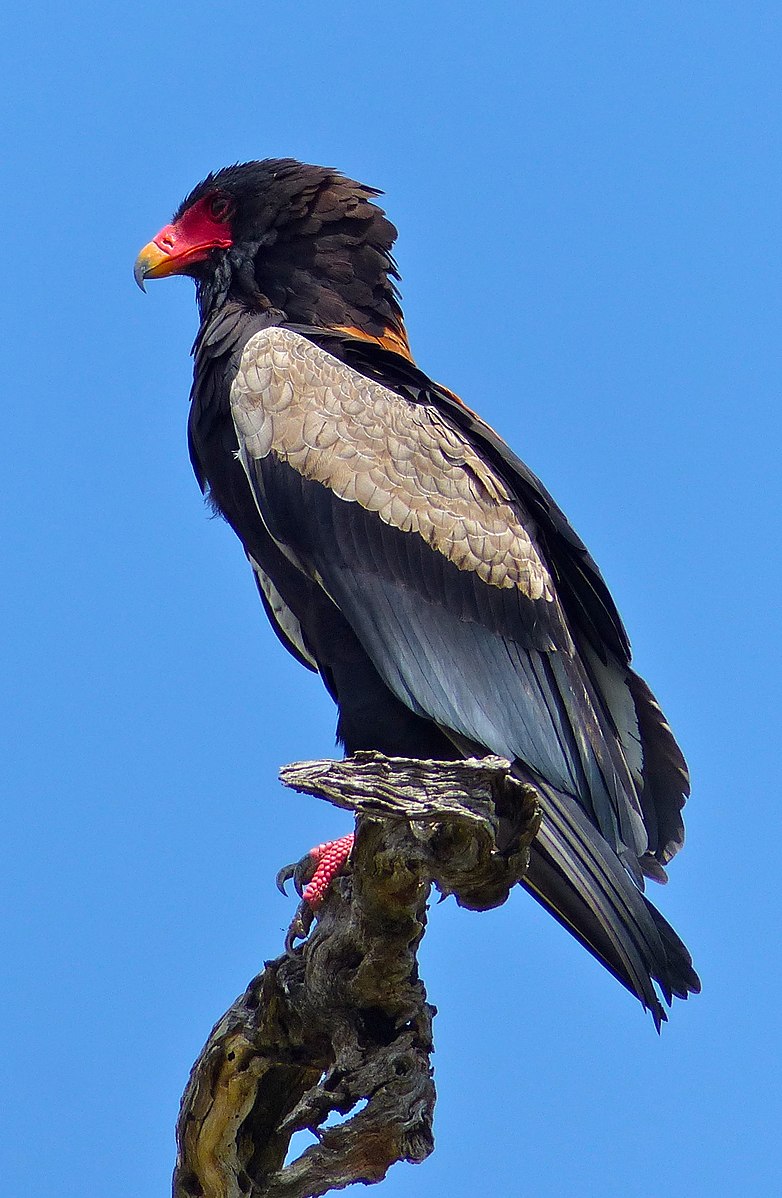Bateleur eagles (Terathopius ecaudatus) are not typically considered dangerous to humans. However, they are powerful predators with sharp talons and beaks, capable of taking down prey animals such as snakes, birds, and small mammals. Bateleur eagles are also known for their aerial acrobatics, including full somersaults in flight, which can be impressive to observe but may also pose a risk to other birds or animals that come too close during these displays.
Scavenging Behavior and Poisoning Risks
One potential danger associated with Bateleur eagles is their scavenging behavior. These birds often feed on carcasses, which can put them at risk of ingesting poison or other harmful substances. In some cases, ranchers may lace dead animals with toxic poisons in an attempt to kill predators, which can inadvertently harm or kill Bateleur eagles and other scavengers.
Drowning Risks
 Image source: Bateleur Eagle By Bernard DUPONT
Image source: Bateleur Eagle By Bernard DUPONT
Additionally, Bateleur eagles may accidentally drown in farm reservoirs, particularly when they are young and less experienced flyers.
Habitat Loss and Fragmentation
Bateleur eagles are also at risk from habitat loss and fragmentation, which can limit their ability to find food, nesting sites, and other resources. These birds prefer open habitats such as woodland savannas and grasslands, and are less common in areas of dense forest. As a result, they may be vulnerable to changes in land use, such as the conversion of grasslands to agricultural fields or the development of infrastructure such as roads and buildings.
Conservation Efforts
Despite these challenges, Bateleur eagles are not currently listed as threatened or endangered by the International Union for Conservation of Nature (IUCN). However, their populations are believed to be declining in some areas due to habitat loss, poisoning, and other threats. Conservation efforts are underway to protect these birds and their habitats, including efforts to reduce poisoning and promote sustainable land use practices.
Real-life Incident
In 2013, a Bateleur eagle was found dead in South Africa after ingesting poison that had been placed on a dead animal. This incident highlights the risk that these birds face from poisoning, particularly in areas where ranchers may use toxic substances to protect their livestock from predators.
Statistics
Bateleur eagles have a wingspan of approximately 6.5 to 7.5 feet (2 to 2.3 meters) and can weigh between 3.3 to 6.6 pounds (1.5 to 3 kilograms). They have a lifespan of about 27 years in the wild. The global population of Bateleur eagles is estimated to be between 10,000 and 100,000 individuals, although their populations are believed to be declining in some areas due to habitat loss, poisoning, and other threats.
References:
– https://lazoo.org/explore-your-zoo/our-animals/birds/bateleur-eagle/
– https://wildlifesafari.info/bateleur_eagle.htm
– https://stlzoo.org/animals/birds/vultures-hawks-eagles/bateleur-eagle
– https://peregrinefund.org/explore-raptors-species/eagles/bateleur-eagle
– https://ielc.libguides.com/sdzg/factsheets/bateleur/behavior


